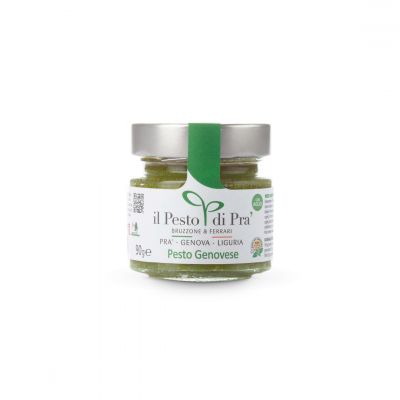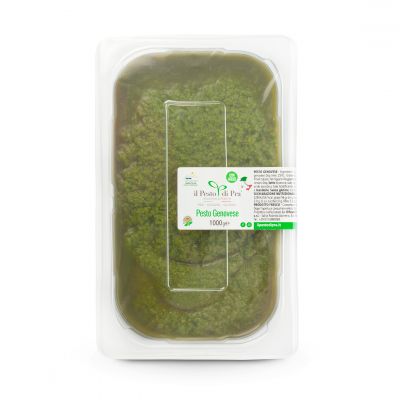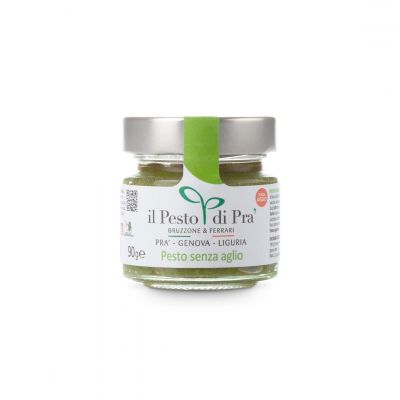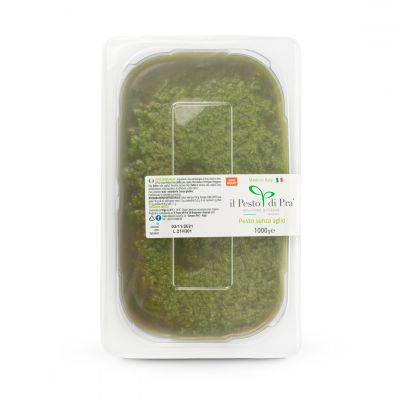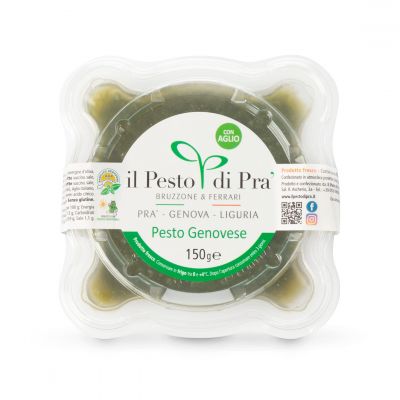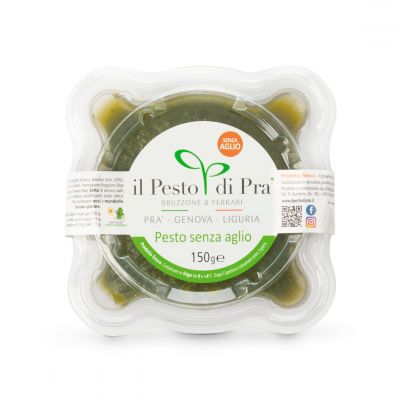The verdant green of this region accompanies us throughout our visit, from the footpaths to the signposts, to the employees’ uniforms: an attention to detail that extends to the warm welcome and the region’s products
⏱ 4 MINUTES READING
Genoa has a perfume all of its own: the scent of the sea, of its streets, of focaccia and basil.
Together with our sales network, we dived into this last fragrance in the beautiful greenhouses of our host company Il Pesto di Pra’.
Pra' is located a few kilometres from the centre of Genoa, in the direction of the Riviera di Ponente. This old fishing village has lent its stretch of coastline to a container-ship unloading hub and its hills to vegetable gardens and greenhouses.
For years the slope of the hills, their exposure to the sun, and the air from the mountains and the nearby sea have created the perfect combination of soil and climate in which crops flourish, in particular ”Genoan Basil DOP” which, has made the fortune of the “Cini” family since the First World War.
It’s a strange name, but that’s what they’re called. It’s actually the nickname of the family of Stefano Bruzzone, who, together with his brother-in-law Alessandro Ferrari, co-owns the business.
Pesto di Pra' is very much a family affair, something that becomes clear to us in the course of the two half-days we spend there. But we could have guessed this right from the start by the way they welcomed us on Friday night for dinner.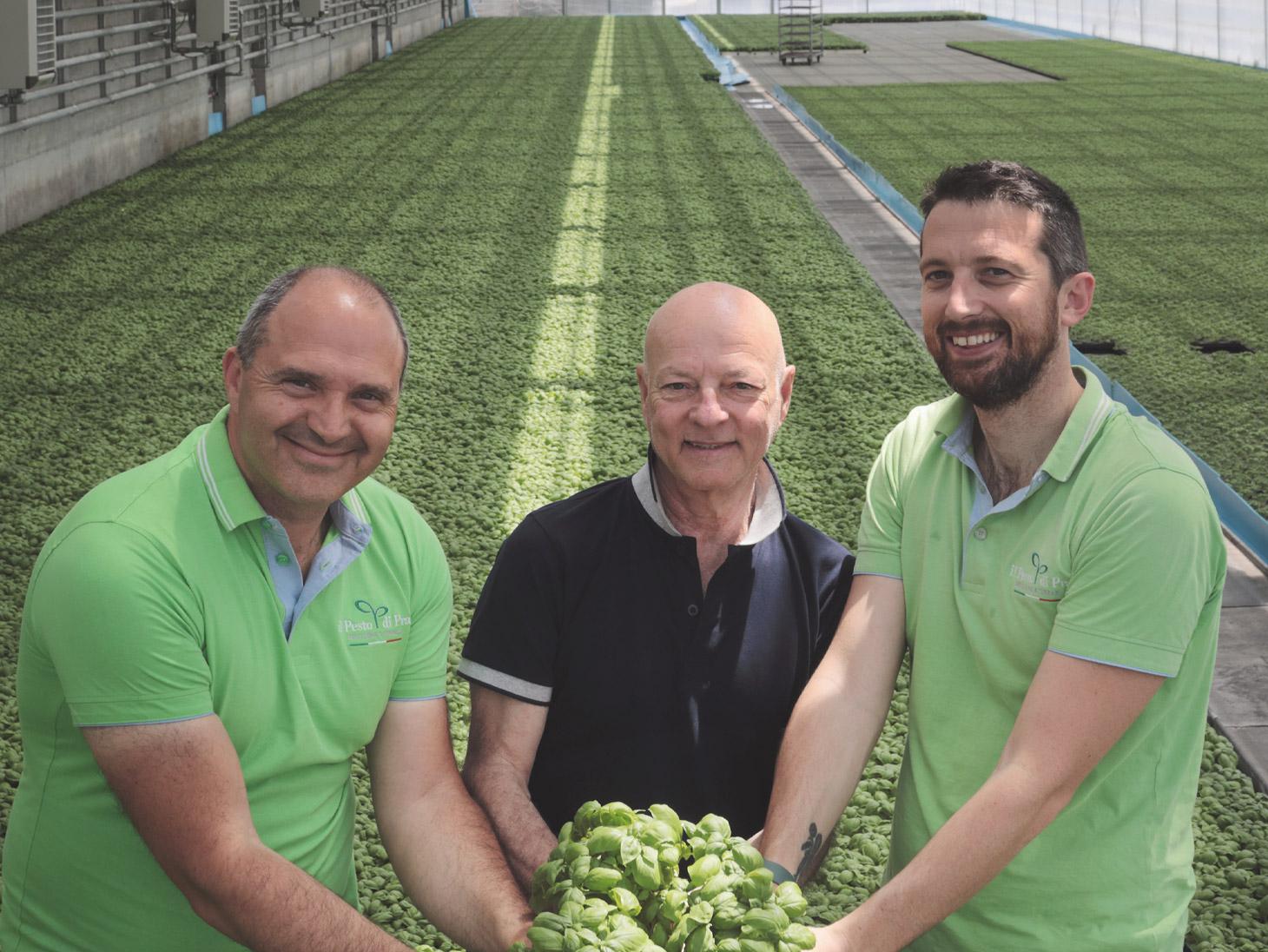
Join me for a quick flashback.
A little earlier, the bus had dropped us off near the port, where Matteo Pezzana, our sales representative, was waiting to take us 'up' to the company.
I say 'up' because you really do have to go up, and you do it by going along two muletracks or “crose”, narrow lanes flanked by walls that lead up the hill from the sea. Those same muletracks described by the Italian singer Fabrizio De André in one of his masterpieces in local dialect, “Creuza de ma”.
When we reach the top, we catch our breath and take in the panorama - to one side the west coast, to the other a complex and gleaming system of greenhouses overlooking the sea: we have arrived at Pesto di Pra'.
We peek inside the greenhouses: the official visit is planned for tomorrow, but Matteo explains that the pink glow we can see in the greenhouses is the grow light, which keeps them gently lit even at night to encourage the basil to grow.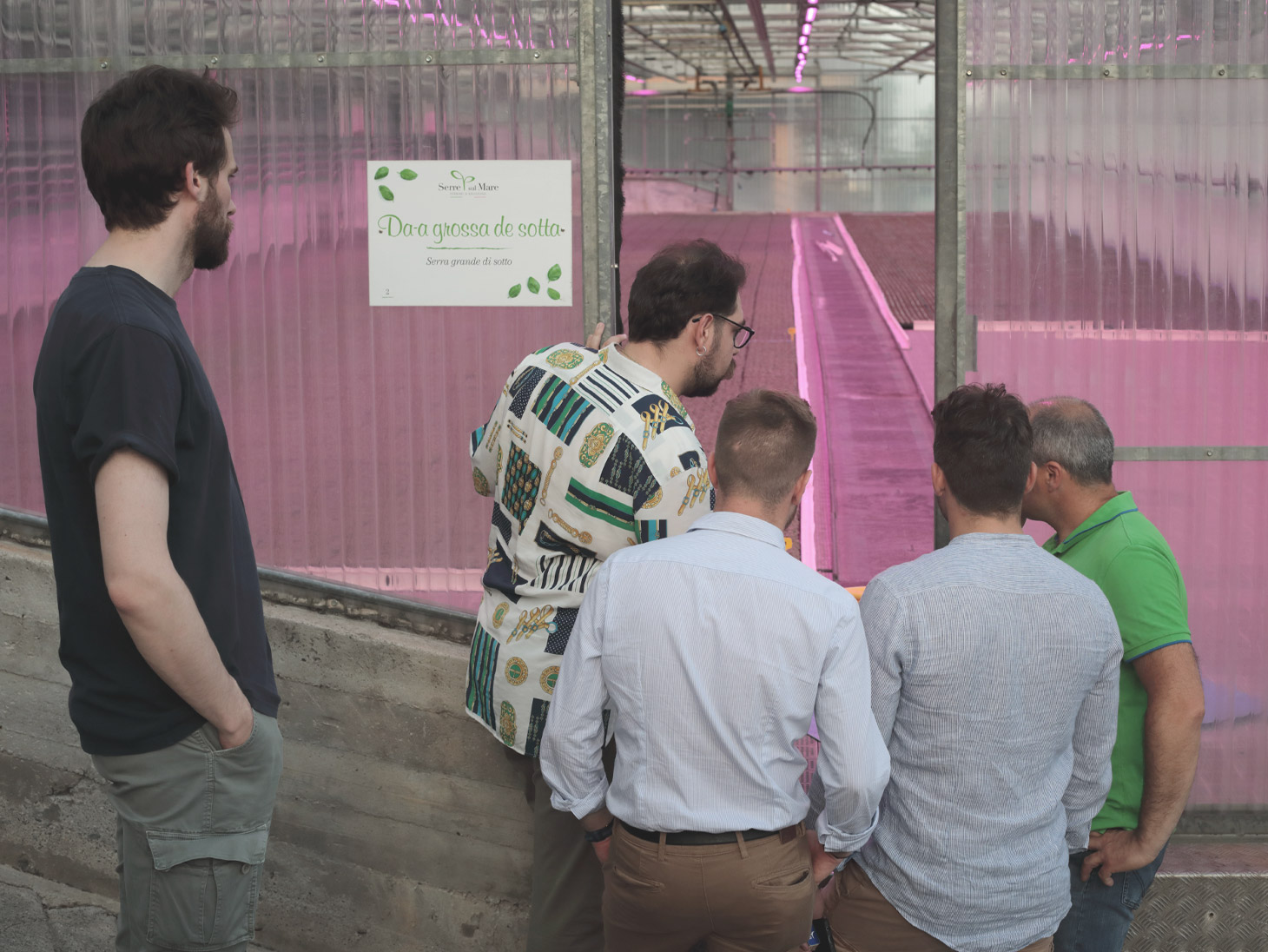
We meet Roberto, Matteo's father-in-law, who’s in charge of sales, and then, waiting for us inside a greenhouse that’s practically a work of art, Stefano and Alessandro, together with the rest of the team.
The evening is a lot of fun. We get to know each other in a greenhouse, half of which is taken up by basil and half by tables set for dinner, and a fabulous buffet. We enjoy some fantastic dishes and come up with new recipe ideas using pesto and the company’s other speciality, walnut sauce. A creamy salted cod and pesto croquette, a savory scone filled with burrata, tomatoes and pesto, or meatballs made with beetroot, gorgonzola and walnut sauce. When it comes to using pesto, your imagination is the only limit. And then we take our seats in the wonderful, warm, basil-scented atmosphere to eat delicious plates of trofie al pesto, cooked to perfection! It's like being part of the family, catching up with relatives you haven't seen for ages, enjoying the varying degrees of closeness. 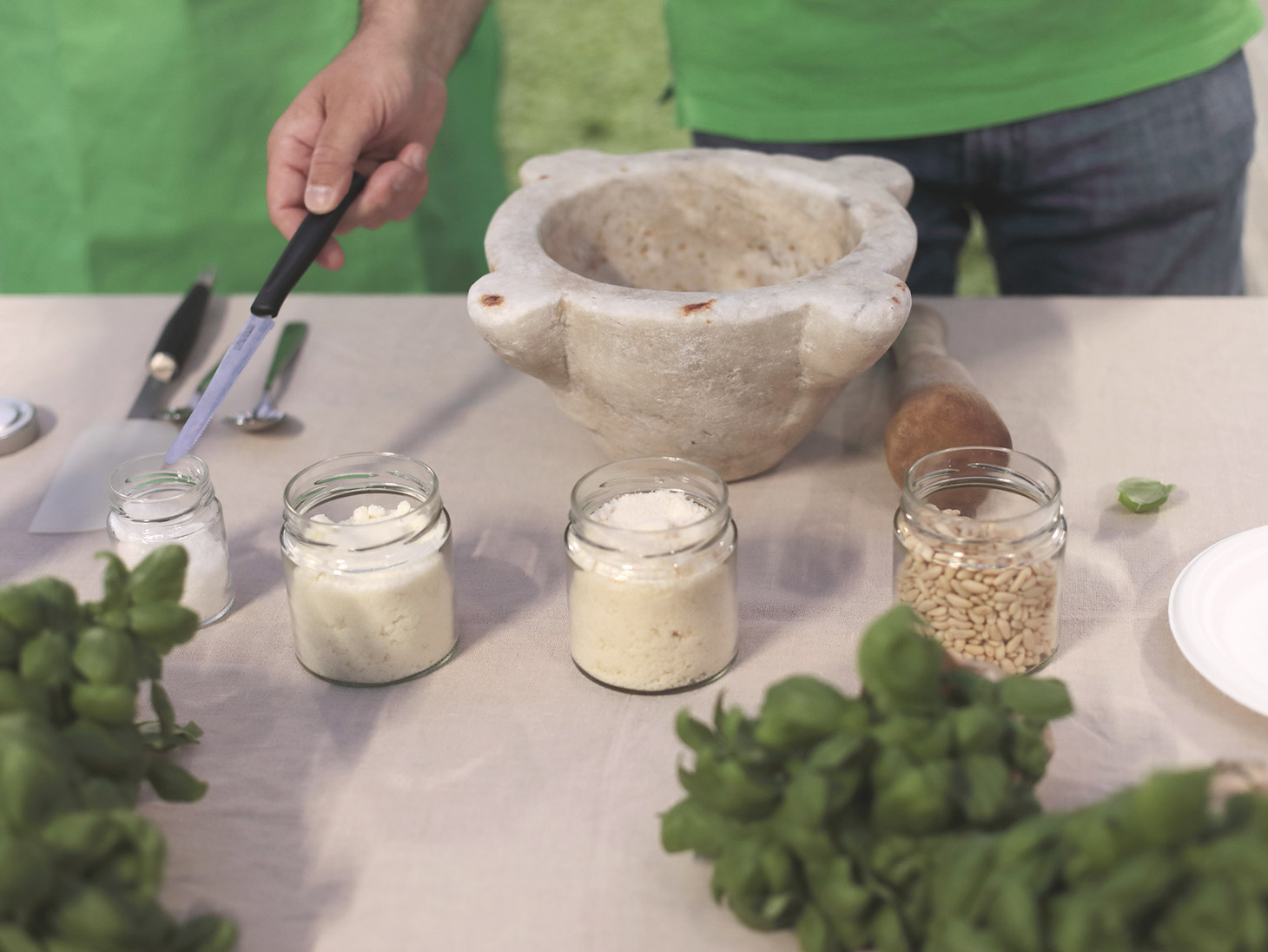 The night ends with an event within the event: a volunteer is invited to try making pesto live. Pestle, mortar and elbow grease: in just a few minutes, Giacomo has learnt the art of using the pestle, for which the Genoans have their own word: 'rumesciare’.
The night ends with an event within the event: a volunteer is invited to try making pesto live. Pestle, mortar and elbow grease: in just a few minutes, Giacomo has learnt the art of using the pestle, for which the Genoans have their own word: 'rumesciare’.
After coffee, we set a time to meet next morning, when we’ll be given an in-depth tour of the company.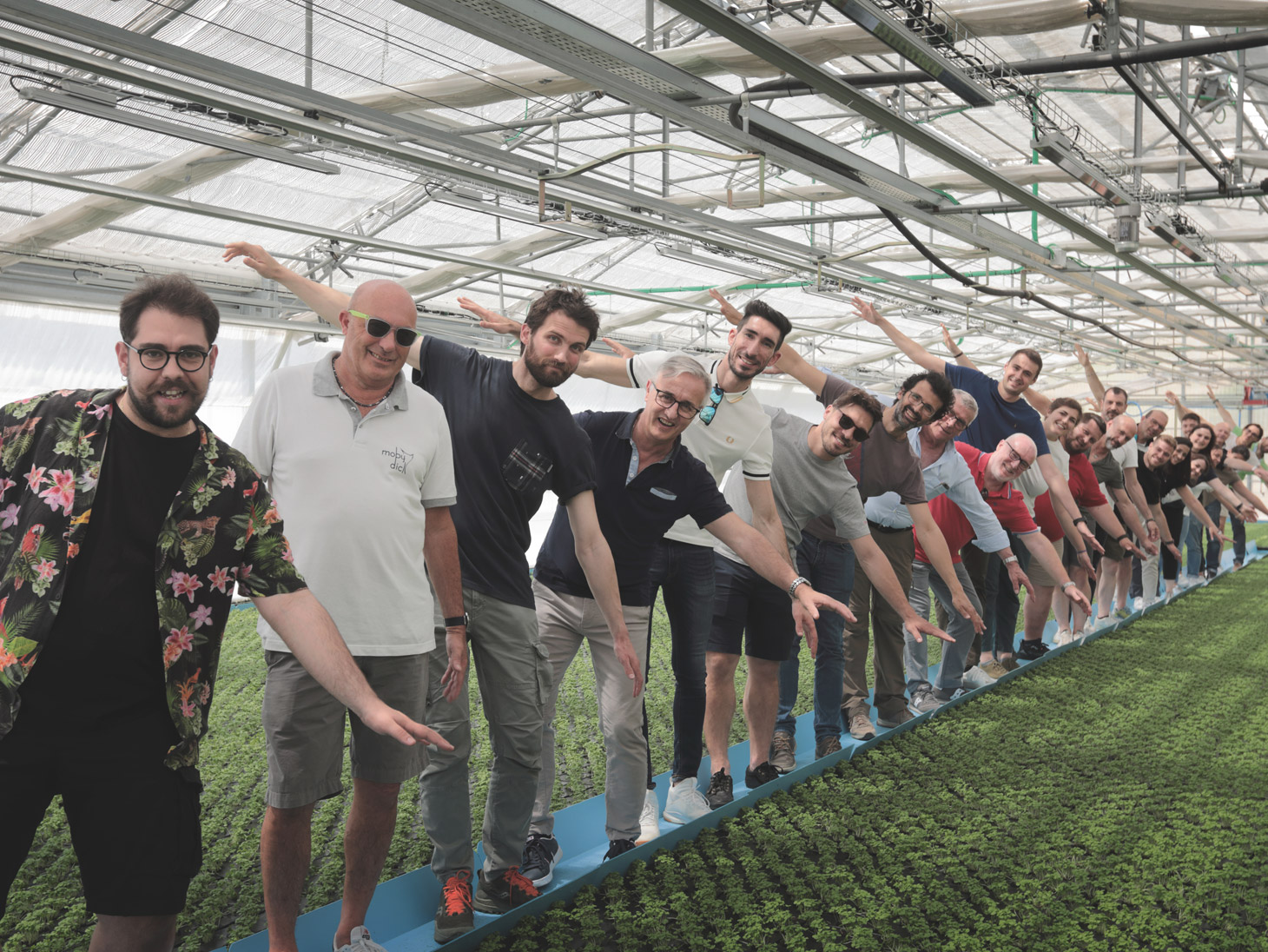
We return to the greenhouse early the next morning. The impression is very much of a modern, clean, well-organised company. A company that seeks to make the most of natural resources while using technology to supplement and support them. That seeks to recognise the value added by human experience and to combine it with the opportunities offered by automation.
The visit begins with seeding, which is carried out using an automatic seeder on a growing substrate placed in an 84-cell plug-tray (25 seeds per cell). The seed is germinated for up to 48 hours in a maximum-humidity germination chamber, until it swells and is ready to put out its first shoots. This first phase takes place in greenhouses known as ”nurseries”, which are designed to house the seedlings during the first 10 days of their life cycle; like all the other greenhouses, they have in-floor heating. 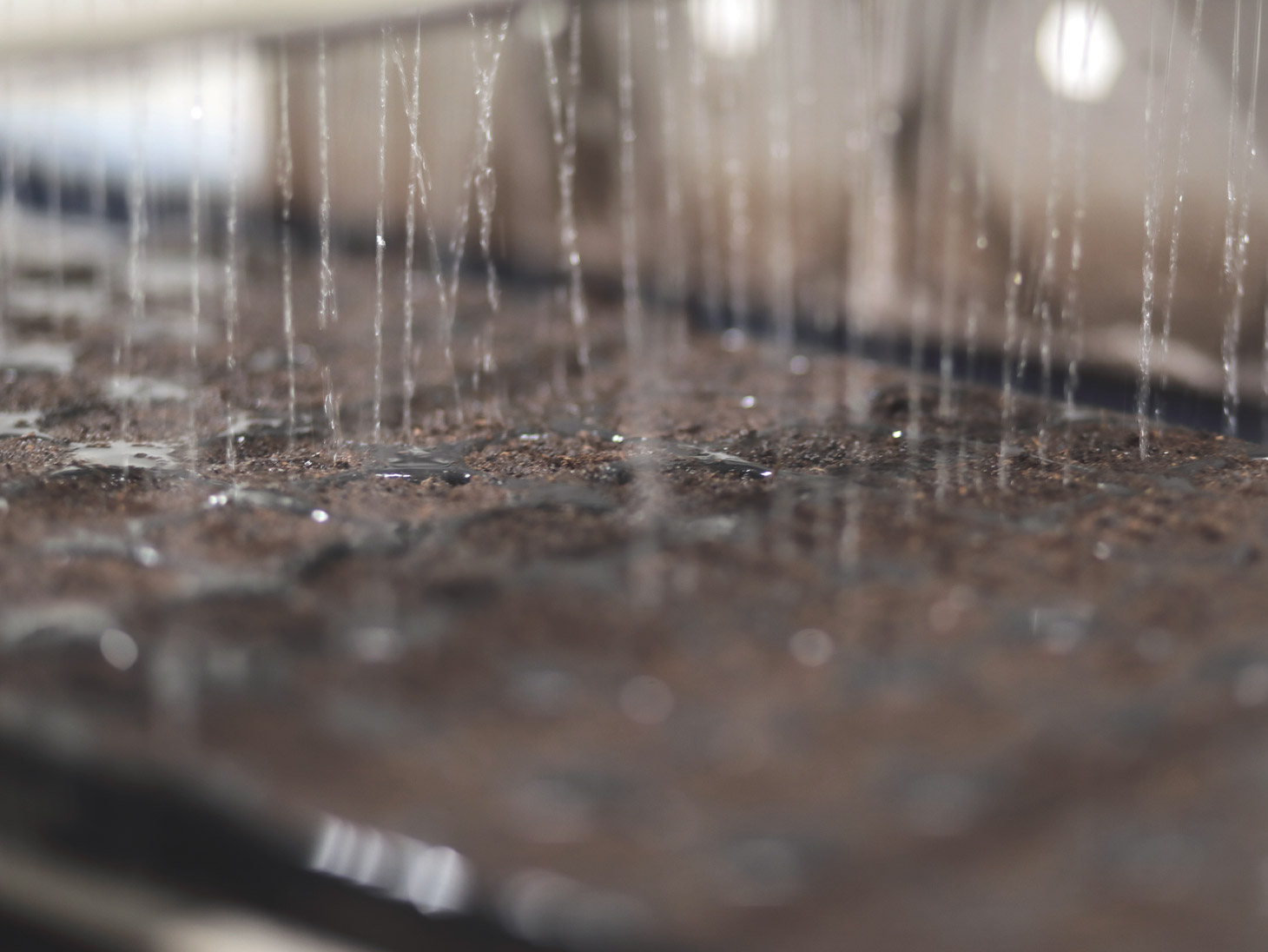
Then it’s time for thinning, which is carried out using a highly-automated machine. The machine places the seedlings in different plug-trays with wider-spaced cells: the number of cells goes from 84 to 21 per plug-tray. This enables better plant growth and avoids shading or competition for light between plants.
The next stage in the growing cycle takes different times depending on the season. In the summer months it may last only 8-10 days, while in winter it could take as much as twice as long due to reduced exposure to sunlight.
The greenhouses in which this last step takes place are equipped with underfloor heating and an automated watering system. In the winter months they’re heated by water lamps or, if conditions become severe, by convector heaters. The optimum temperature in the cells is 26°C. In the summer months, blackout curtains or sunblinds come into play to prevent the basil from oxidising and the leaves from becoming too dark, as they must always remain bright green. Automation is a great help here: in the past, families had to open and close hundreds of small windows on the rooves of greenhouses - once made of glass, today made of polycarbonate - by hand. 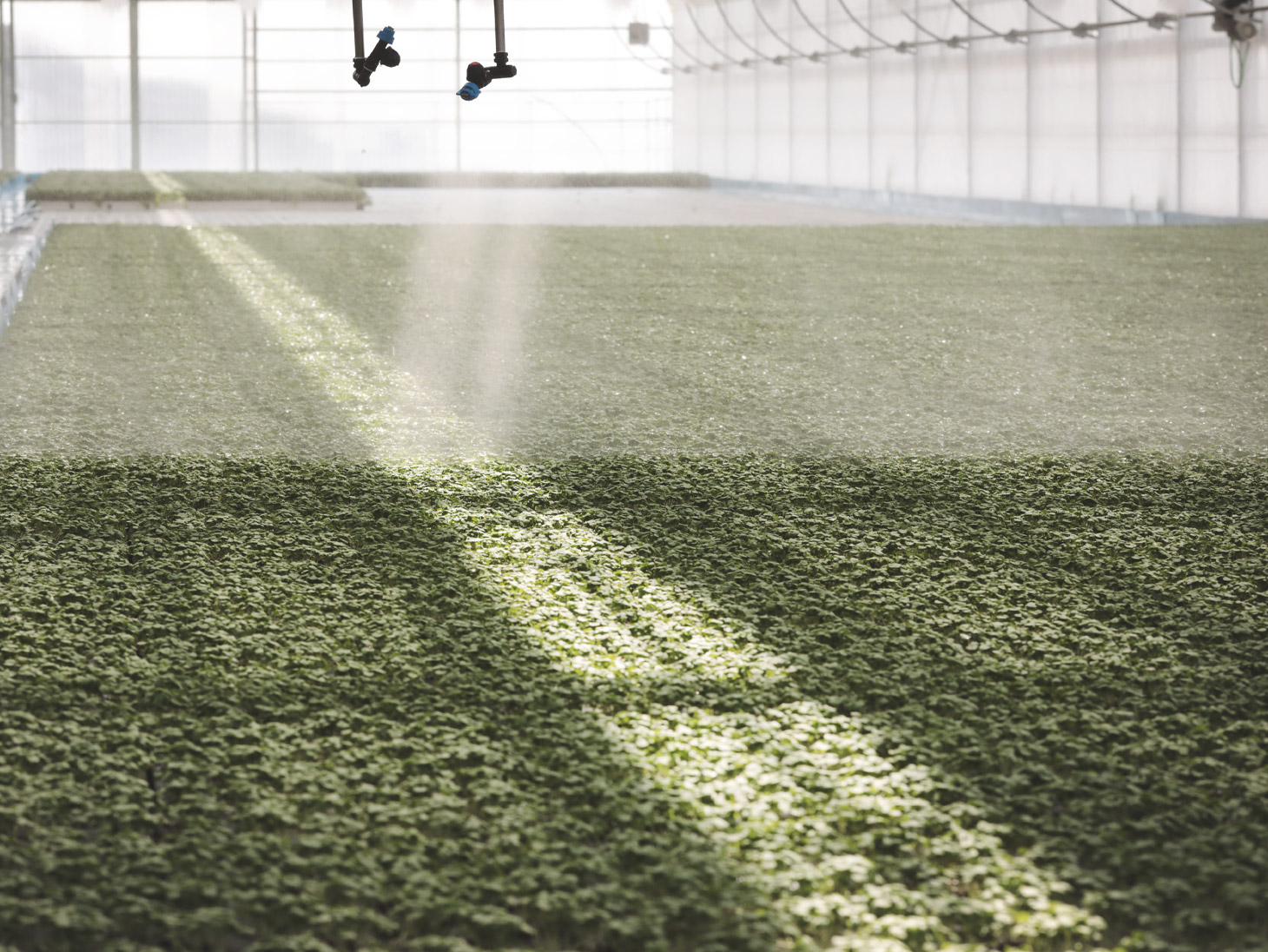
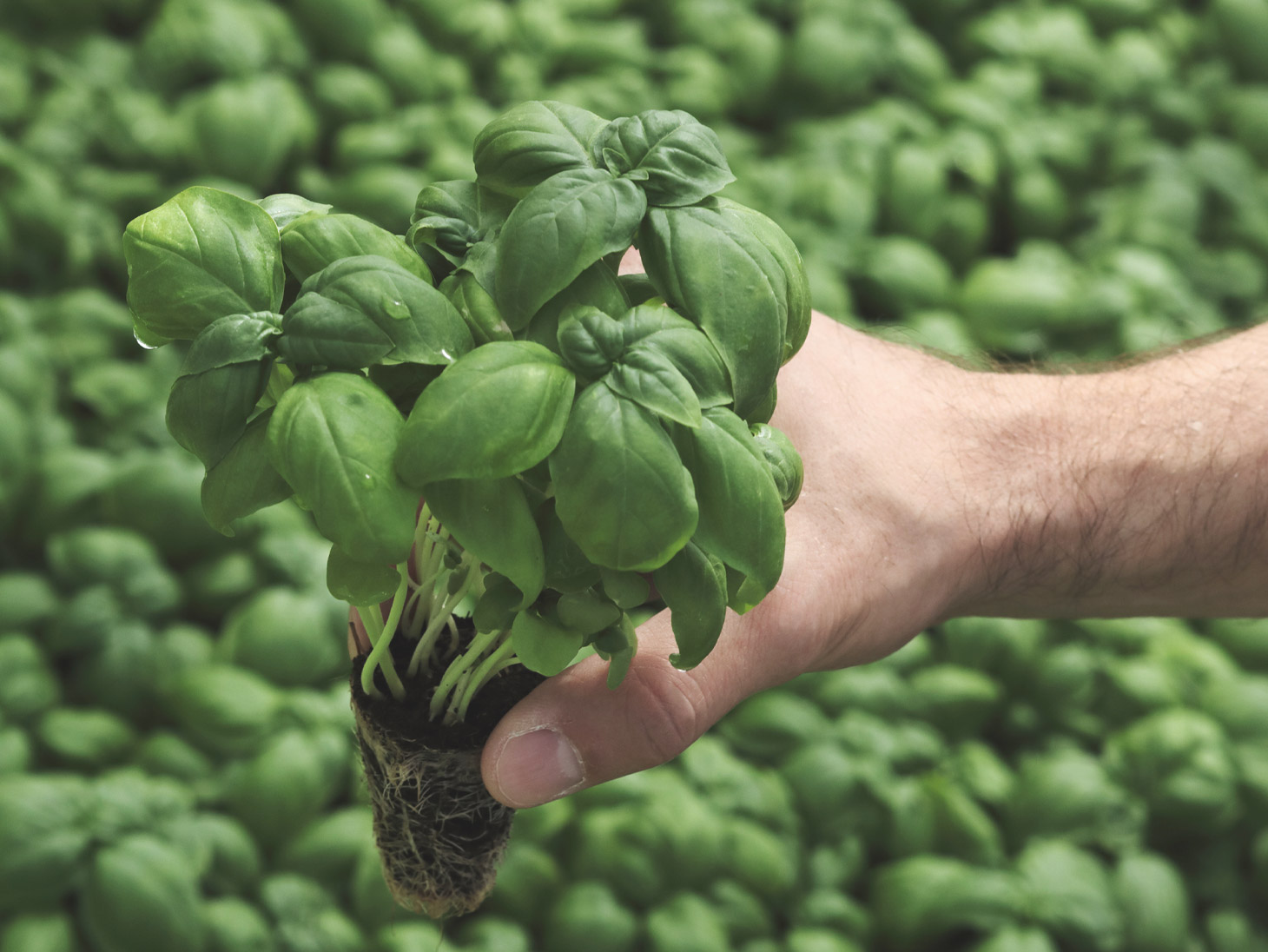
It’s clear that it’s down to Alessandro, who’s in charge of the greenhouses, to decide when is the right time to sell the basil seedlings at the market or to use them to start making pesto.
The production plant lies next to the greenhouses. It uses only basil leaves cut early the same morning by a special machine: the basil must be cold when cut, or else it perishes.
The leaves are washed straight away for about 40 minutes, then rinsed with water before being dried in a large centrifuge. The following morning they will be fed into the large cutting machine, which for convenience we will call an electric mortar. The “mortar” is first fed the paste of garlic and pine nuts, strictly Italian in origin. Next the basil, extra virgin olive oil, salt and cheese are added. The cheese is another key ingredient, and Pesto di Pra’ uses a mixture of three: grated Trentingrana DOP, Parmigiano Reggiano DOP and Pecorino Romano DOP. This means that there are seven ingredients in Pesto Genovese - no more, no less.
The operations inside the mortar take place under controlled temperatures: in fact, cold is the only method used to conserve products at Pesto di Pra'. On exiting the mortar, the products are sent to the relevant packaging line and on to storage. 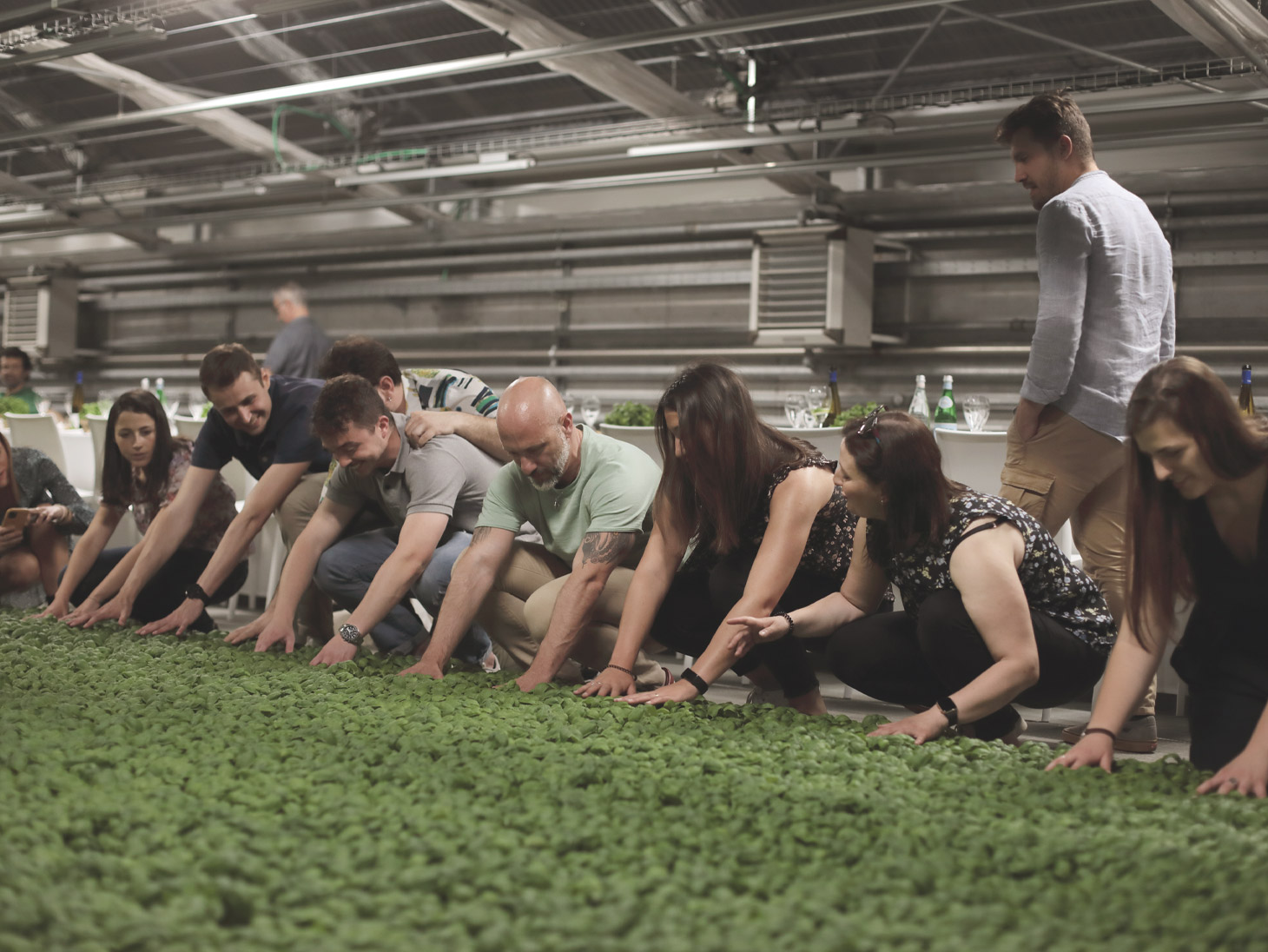
Each step of the visit was linked by a common thread: the color green. The aisles were green, the pipes were green, the buttons and signs on the various machines were green; green was the color of the (sometimes humoros) signs at each key stage of the plant, and of course the uniforms of the different operators were green. This attention to detail was in evidence throughout our visit. What great pesto makers!
The tour is over, and a last taste of the Genoese welcome awaits us in the shop, where we are offered a snack of bread, butter and anchovies before leaving for Piedmont. Such a great visit. Such great people. Never listen to those who’d have you believe the Genoese have a short fuse: it’s absolutely not true, as we saw for ourselves!
Alessandro De Conto
Sales Director




